#doctor who audios my beloved
Text
Forgive another aside but things got Choppy™️ while I was out for work yesterday and all I could play was that seasickness line from Slitheen Excursion over and over in my head
#not what fourteen’s up to#doctor who audios my beloved#I bring a sort of ‘marine science’ vibe to fandoms that people don’t really like#on the up side#I finished all of Ghosts of India on this trip#and part of Taking of Chelsea 426
4 notes
·
View notes
Text
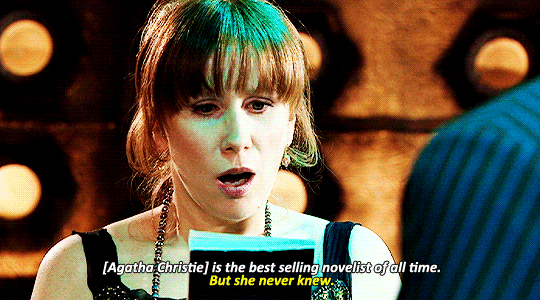
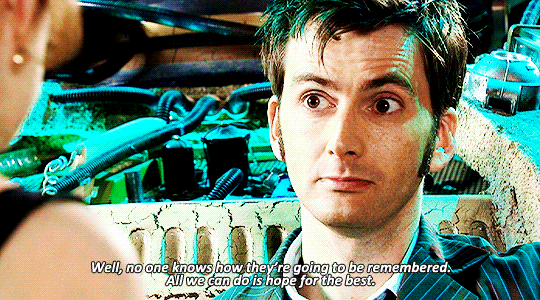

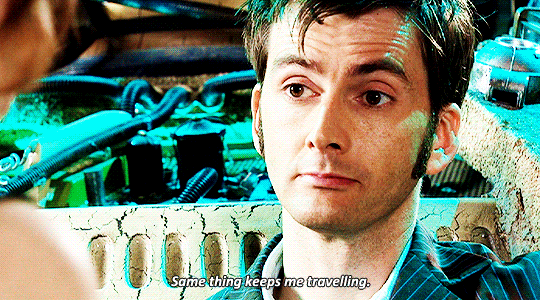
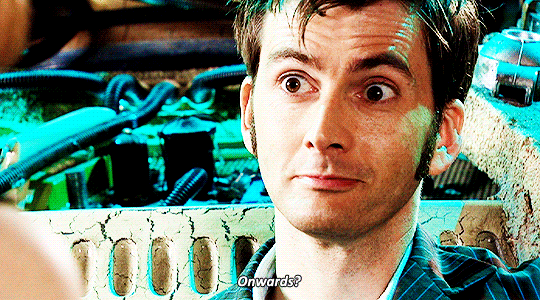
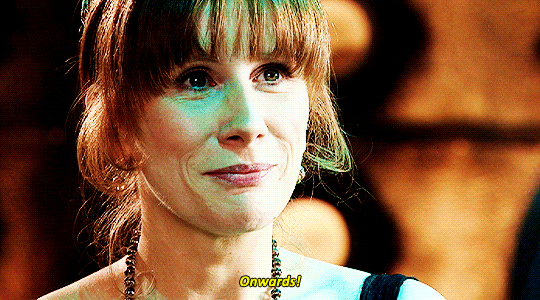

#mine#doctor who#dwedit#david tennant#catherine tate#beloveds!!!!#i saw the newest dw trailer on tv today!!!#i need the new episodes now!!!#oh and i've gotten back into catching up on my big finish audios#i'm listening to the newest classic doctors new monsters set#it's been very fun#oh also i got a new student today#and his mom was a bit worried about how he'd be on his first day at a new school#but he saw my lanyard during carpet time and was like 'is that raichu?'#and all of my other kids were like 'LOOK AT ALL HER OTHER POKEMON THINGS' and he was very happy#and i was like bro you are going to fit right in#ok i haven't talked in the tags about my day in a long while hahaha#byeee good night tumblr friends!!
661 notes
·
View notes
Text
Thinking about how in "Death and the Queen" (Tenth Doctor Adventures - Volume one), the Doctor said "I lied. I said I was fine about you leaving, and I'm not" and "No man's ever gonna be good enough for my Donna", and how when he said "No happily ever after", Donna answered "Except with you".
#i love them#so so so so so much#btw those audio books are incredible you should go and listen to them#especially death and the queen#this one's gonna make you fall in love with donna#if you're not already in love with her ofc#doctor who series 4#doctor who#catherine tate#david tennant#tenth doctor#donna noble#donna noble my beloved#doctordonna my beloved#donna fucking noble
220 notes
·
View notes
Text
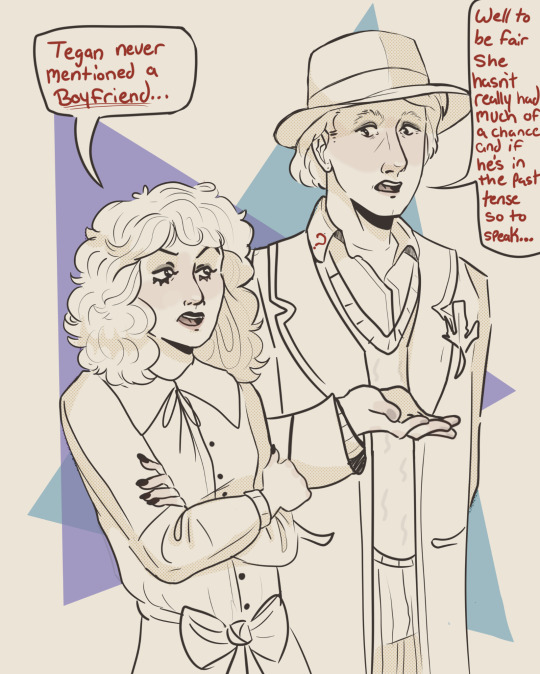
Just listened to the Big finish audio "The Waters of Amsterdam: part 1" and I'm sorry but the way this scene played out literally within the first 4 minutes of the audio had me dying 💀 why did Nyssa sound so offended about Tegan having a boyfriend while she was away from the TARDIS??
#doctor who#classic doctor who#doctorwhofandom#art#artwork#artist#nyssa of traken#arts#tegan jovanka#artworks#doctor who big finish#the waters of amsterdam big finish audio#5th doctor era#5th doctor#sarah sutton#janet feilding#tyssa#5s tardis team my beloved#oh Nyssa#your jealousy is showing 😁#every big finish audio I hear with her istg either Tegan or Nyssa sound offended when the other is flirted with#maybe I'm just delulu but its okay#peter davison
114 notes
·
View notes
Text
River meeting versions of the Doctor pre-Library does actually still make sense. Although she did tell 10 that that was the youngest version she's ever seen of him which implies that she's met an older 10 (14? 👀) and we've been able to get glimpses of those thanks to Big Finish and the Day of the Doctor novelization, who are we to say that she was not referring to the Doctor in their entirety and just meant it per her meetings with 10? If it doesn't make sense for her to meet pre-Library Doctors, why then would the TARDIS describe them as wool wrapped 'round and 'round each other? Even Missy herself acknowledged that River is a complex space-time event that would cause a bunch of paradoxes and rip time apart if something happened to her. She teased her relentlessly though ...and so did River. And I still think too much of Missy's genuine offer of condolences when she knew that 12 had left Darillium.
They're an ouroboros - River and the Doctor. You can never tell where their beginning or ending is. They are always happening across time and space. And I think it befits them.
The way they always try to spend more time with each other, breaking laws just for each other, their fierce protectiveness for each other, even when the Doctor has no idea who River is.
#tia thinks too much#like literally#but you won't find me this way when it comes to my academics lol#this yapping is reserved solely for my beloveds#doctorriver#doctor x river#the doctor x river song#dw musings#doctor who#big finish#big finish audios#the doctor's wife#river song#the doctor#the professor#missy#missy doctor who#bring back river song#river is patience#the doctor x the professor x the master
62 notes
·
View notes
Text
actually wonder about martha and donna. they met and got on really well, they could've hung out conceivably, but then donna got her memory wiped. and now her memory is back again. it's another facet of the eternal question about martha and the story: did she leave it entirely? how would she (from an in-universe pov) want to possibly still be in that story, especially considering how donna in some ways could have been a much healthier point of contact than the doctor? is she still disillusioned and tired, or would she think fondly back to some of the wonder and want to be in some way connected, not just as someone who's scared and carrying the responsibility of the world? who is martha jones today after all of that? did she ever run into donna with no memory on the street and did she know not to greet her like a friend, and what could it have meant for her that donna wouldn't recognise her? another link to that story severed outside of martha's control. does she know about the companions group? would she know that donna got her memory back? what would her feelings be if she did stumble across fourteen, either by connecting with donna first or realising afterwards that this face lives with donna (whether or not she knows about both the mindwipe and the regaining of that memory)
#i should check out martha-based audio adventures and books#martha jones#donna noble#doctor who#dw#lotta questions all of them about my beloved martha jones#doctor who spoilers#dw spoilers#is she still with torchwood or unit or?
134 notes
·
View notes
Text

Parents please check your kid’s Halloween Candy I found the Celestial Intervention Agency’s Coordinator in a Kit-Kat.
#this is the shittiest thing i’ve ever made#narvin my beloved#tbh narvin needs a hug#narvin#doctor who#dw#big finish#dweu#doctor who big finish#doctor who eu#big finish gallifrey#gallifrey#gallifrey audios
106 notes
·
View notes
Text
Being a gallifrey fan is so funny because like there’s this guy and he’s a jerk and mean to the characters you like and definitely deserves to be punched and then it’s a few seasons later and suddenly you would die for him
144 notes
·
View notes
Text
I may or may not have just edited the TARDIS wiki to list the Sound creature as one of the Eighth Doctor's children.
#theyre on charleys page so its only fair to put them on eights as well#scherzo my beloved#doctor who#dw#dr who#classic who#eighth doctor#big finish doctor who#big finish audios#big finish#charley pollard#scherzo#audio: scherzo#sound creature#the sound creature#i definitely did do this#tardis wiki#tardis
34 notes
·
View notes
Text
"The Very Model of a Gallifreyan Buccanneeer" is the perfect Doctor Who thing because it both references the dubious canonicity of the villain of the pilot episode of the unproduced spin-off based on the doctors robot dog while also incorrectly calling the Daleks robots. All while sung by Colin Baker. And then all of that is wrapped in a half-goofy half-increadbly sad story about pirates and loss of a loved one.
Truly peak who.
youtube
#Doctor Who#Big Finish audio#Big Finish Doctor Who#Sixth Doctor#Evelyn Smythe my beloved#Colin Baker#Doctor Who and the Pirates#Or#The Lass that Lost a Sailor#Youtube
18 notes
·
View notes
Text
the doctor put himself in time purgatory and donna made sure he had a pillow so that he would be comfortable……………..
#the time reaver audio story is fucking horrifying btw.#doctor who when it does time travel horrors my beloved <3
8 notes
·
View notes
Text
oh so jubilee is GOOD good
#sixth doctor#rob Shearman audios just hit different#finally got round to it and I’m OBSESSED#especially for all the tower stuff#wish there was a tardis stained glass in the chapel of St John#and fucking hell trying to move about with a wheel chair in the bloody tower?#sheesh#also Evelyn my beloved#doctor who#when people said ‘oh it inspired dalek in s1!’ I was like cool!!!#I was not prepared.?!?
7 notes
·
View notes
Photo
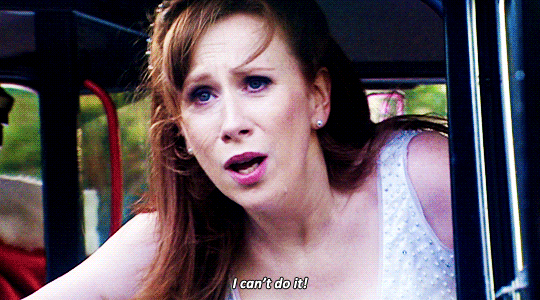
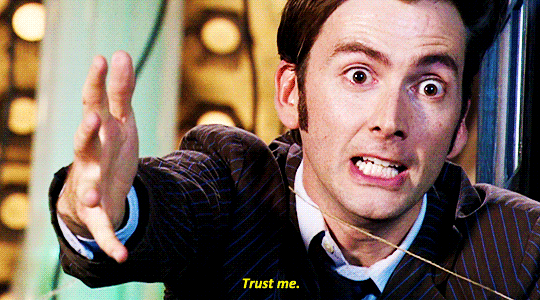
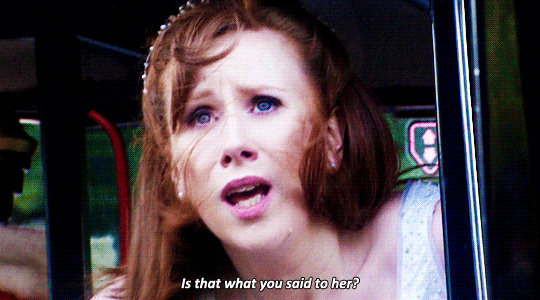
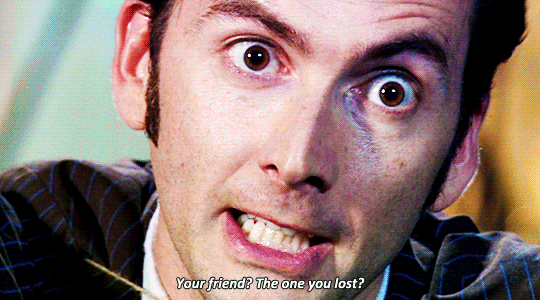

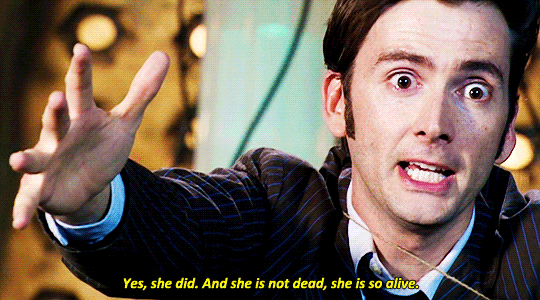
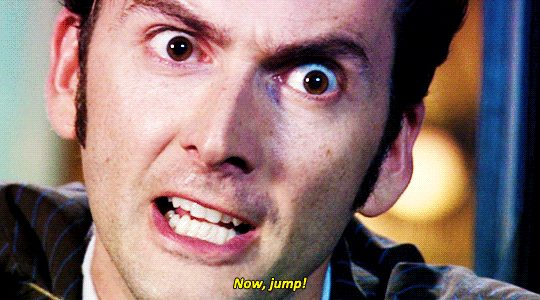
#mine#doctor who#dwedit#david tennant#catherine tate#:((( but also :')))#i downloaded the out of time 3 audio with ten and six#very excited to listen to it!!!#weeping angels my beloveds...#but i think i'll wait until i finish doom coalition before i listen to it#also i think i'm done with my report cards for the year woooo#ok good night my lovelies
1K notes
·
View notes
Text
🕸niche nerd time: next installment in the gallifrey series comes out this week and i am HYYYYYYYYYYYPED
#me: idk how much comics i'll ever read it's a lot to keep up with#also me: ALL THE DOCTOR WHO AUDIOS INCLUDING THE POLITICAL DRAMA FULL OF STUFFY TIME LORDS BUT ALSO NARVIN MY BELOVED#PLS SAY BRAX IS GONNA BE IN ONE OF THE UPCOMING SETS#AND I WILL UGLY CRY WHEN ROMANA COMES BACK TOO AS I'M ASSUMING SHE WILL OK? OK COOL
0 notes
Text
since this seems to be the tangent I am currently on, here we fucking go again with my latest toschei brainrot:
I can’t fucking get over the fact that Theta was meant to be the Master, but that they intrinsecally embodied everything that the Master is and fucking CHANGED THE COURSE OF THEIR FUTURE bc they didn’t want that and so they simply fucking YEETED REAPONSABILITY ONTO KOSCHEI like it was nothing??? I can’t with this child
the worst thing is that you can see it too: everything the Doctor does is always hyper controlled, like they are afraid of letting part of themself go, like they fear that part of themself
AND they always need (almost compusively) to be the ‘good’ guy of the situation, like they have something to prove, almost as if they know that they really aren’t
also, to be completely honest, everywhere the Doctor goes, they bring misery: almost everyone the Doctor meets ends up dead in a way or another, or misplaced in time, or with their heart broken, or with all of the above
though I am not too sure about the Master themself
like, I know that Koschei really wasn’t meant to be the Master, but since they did became the Master, I feel that they too had the potential, just less then Theta, apparently
that’s why they keep on telling Theta that they are two sides of the same coin: because they fucking are!! the same!! (one of them is more cowardly than the other though)
but I dunno, maybe they could also have become the Doctor, or some version of it at least, after all they showed that every time they don’t remember who they are they become an almost normal and genuinely good person (YANA I LOVE YOU, also The Master audio, guys, The Master audio), or that they are at least capable of change (MISSY, MY BELOVED MISSY)
‘who knows, could have been interesting’ I say, normally, while I go back to thinking about thoschei a normal amount. normally.
#doctor who#thoschei#the doctor#the master#tensimm#dw#twissy#spydoc#threegado#every flavour of toschei actually#toschei be normal for once#mission failed successfully
136 notes
·
View notes
Text
The Boring CBT Final for the Fun CBT King - By Lexi Moon aka CashAndPrizes
Okay! People asked and I fought tumblr to deliver!
Hi, I'm CashAndPrizes also known as Lexi Moon, and I am a doctoral student studying clinical psychology. I wrote about Redacted (specifically Lasko) for my final for Cognitive Behavioral Therapies. Here's the paper.
Shout out to my beloved friends in the WhoreHome and W.A.R. for keeping me going through this paper. I love you dearly.
Words of warning:
I am a clinician in training. I am still being supervised. I have not been graded on this final yet. (I'll update when I get it!) And I am definitely not an expert. Take everything here with a grain of salt.
I am not a licensed therapist but even if I was I am not your therapist. I'm play acting as Lasko's therapist for a class. Take everything here with a grain of salt. If you read any of this and think "It's a bit loud in here" do not assume this is absolutely you. If you have the means, please try finding your own mental health professionals and if you don't, please do a lot of research on these subjects. Don't use this as a diagnosis please, I'm just a guy.
I filled in a lot of Lasko's backstory based on my experiences with patients and my beloved Lasko kinnies who were instrumental to the writing of this paper. (I won't tag you and call you out, but you know who you are an I love you.) Your headcanons might be different - that's cool. I'm not claiming canon over most of this - but I did use the transcripts and timeline very heavily.
If you don't like the idea of pansexual, transgender, Indo-Caribbean/Trinidadian child of immigrants Lasko - pookie this might not be for you. If that sounds like your jam though - come on in, the water's fine.
Without further ado. Ladies and Gentlemen, this is Mambo Number Five. Here's Lasky. I can, in fact, fix him.
Case Summary
This case conceptualization addresses the hypothetical course of treatment for Lasko Moore, a character in a modern-fantasy audio narrative. Lasko Moore presented to treatment as a 30-year-old pansexual and transgender Indo-Caribbean man working as an administrator and adjunct professor at Dahlia Academy for Magical Novices for persistent anxiety symptoms. Upon intake, Lasko reported experiencing near constant racing thoughts that he was unable to “turn off”, panic attacks, and increased anxiety about social interactions at his work. He described spending a significant amount of mental energy preparing for and reviewing social interactions with colleagues such that he often avoids his colleagues in an effort to minimize his anxiety. Lasko reported that the anticipation around coworker interactions (meetings, socials, etc.) becomes quickly overwhelming as he becomes preoccupied with what he will say and do in an effort to try and minimize his tendency to become hyperverbal and overshare information as well as stuttering. He described this process as starting with embarrassment over previous interactions which leads to critical thoughts like “I shouldn’t be so anxious” which leads to rehearsal of potential outcomes of interactions. However, in the moment of social interactions he becomes so anxious as there “aren’t any objectives [or] any specific roles” to the conversations that he “word vomits” and becomes tangential and overshares until he runs out of breath and stops himself from talking due to his own critical thoughts and begins to isolate himself.
Lasko was initially diagnosed with Panic Disorder (F41.0) and Generalized Anxiety Disorder (F41.1) to capture his persistent anxious state with occasional intense bouts of extreme anxiety and panic. An initial long-term goal was collaboratively set as improving his coping strategies and tolerance of anxious affect to better network and create relationships. As this was Lasko’s first time utilizing mental health services, treatment began with inhibitory learning in combination with Acceptance and Commitment Therapy in order to facilitate willingness to experience interoceptive cues and extinguish avoidance due to fear of negative consequences. This was able to reduce his panic attacks as he felt more able to tolerate overwhelming anxious affect. Despite his clear engagement with treatment through attendance, homework, and skills practice, Lasko continued to struggle with critical thoughts and avoidance of coworkers which he identified as a major barrier to his continued professional development and potential non-academic relationships. Through collaborative exploration, a persistent early maladaptive schema relating to his critical thoughts emerged and treatment shifted to a goal of starting dialogue between schema modes to facilitate the use of coping strategies to build interpersonal effectiveness. Lasko was born as the human-born child of Trinidadian immigrants who moved the southern California in the early 1990s due to political unrest. From an early age Lasko faced high academic expectations from his parents who desired upward mobility for their child and a “piece of the American Dream.” His mother was emotionally labile to the point of explosive outbursts where his father was more passive and spent significant energy working and caring for his wife. This experience started Lasko’s early maladaptive schema regarding rigid standards with no support, which only became worse when Lasko’s elemental powers began developing at thirteen and his parents expected perfect control (and perfect suppression) of his powers with no training and a highly critical environment. This led to Lasko isolating himself at home as much as possible to hide his lack of control but left him with an environment that created a positive feedback loop where his lack of control led to increased yelling and criticism which led to worsening outbursts of his powers. This culminated in a final traumatic event when Lasko was seventeen and lost control of his powers, leading to his mother “calling [him] everything she could think of […] she was so loud and I just wanted her to stop” to the point that Lasko accidentally sucked all of the air out of the room and almost suffocated his mother. Though Lasko was able to find support with the Department of Uniform Magical Practices and become emancipated from his parents, these experiences developed a maladaptive pattern of hypercritical thinking about himself, especially in the context of social relationships.
Research
Avelino Cardoso et al. (2023) pose potential ways to modify and apply Schema Therapy to sexual and gender minorities. This work focuses on understanding how of harmful implicit and explicit messages about gender and sexuality contribute to early maladaptive schemas based on consideration of the minority stress model, and how Schema Therapy interventions can be applied to sexual and gender minorities. One area of particular relevance from this article is the conceptualization of an inner critic mode that specifically represents stereotypes and prejudice that are naturalized by society. When applying these principles to the case of Lasko, the environment of his childhood can be understood as an essential aspect of the treatment. Though Lasko did not present to treatment looking to discuss the impact of his pansexuality and transgender identity, potentially because of the clinician’s own advertised identities, the impacts of systemic oppression against sexual and gender minorities can be woven into treatment for his hypercritical early maladaptive schema. Based on the suggestions of Avelino Cardoso et al. (2023), it may be worth examining his secondary schemas around shame and social isolation as also being shaped by his experience as a gender and sexual minority and how that may contribute to his predominant hypercritical schema.
A major concern for this section of the paper is the lack of research modifying second and third wave cognitive behavioral therapies for sexual and gender minorities. Results for Acceptance and Commitment Therapy with LGBTQ+ individuals only revealed one article about group therapy and a study proposal; results for Schema Therapy with LGBTQ+ individuals only provided Avelino Cardoso et al.’s (2023) theoretical essay. There does not appear to be much research and what research exists is extremely limited with no randomized control trials. This makes it clear that evaluating the efficacy of treatment for sexual and gender minorities is not a priority, which leads to a major critique of Avelino Cardoso et al.’s work. Though the article is useful for considering how to address systemic change in the room, it seems to attribute lived experiences of sexual and gender minorities to a schema rather than ongoing threats in a world where hate crimes and discrimination against LGBTQ+ individuals is on the rise. The abandonment and violence that these individuals may face is not imagined and it can be seen in the lack of interest in research.
ADDRESSING Model
When considering the case of Lasko, it is important to remember that psychology does not develop in the vacuum of individual experiences – psychology develops based on the global environment, which includes the social, political, economic, and cultural contexts as well as individual context. Utilizing Hays (2022) ADDRESSING Model, the impact of Lasko’s intersecting identities can be understood to have a major impact on his current symptom presentation and the development of early maladaptive schemas and schema modes. Lasko was born to first generation immigrants from Trinidad with strong Indo-Caribbean and Catholic roots – and he was assigned female sex at birth. Using a systems-focused lens, Lasko’s current symptoms can also be understood within the larger context of living in a world where several aspects of his identity are under intense scrutiny and political debate. As a child of immigrants and as someone Indo-Caribbean, Lasko likely faced explicit and implicit messages about his intellectual capabilities, his body, and his work ethic. While Lasko directly experienced his mother as extremely critical and never satisfied with his performance, it is just as likely that he received messages as a child about needing to work harder than many of his same aged peers for equal amounts of recognition based on his racial, ethnic, and sex assigned at birth. There is also the element of the disconnect between his sex assigned at birth and his gender presentation, and the messages he received about being transgender from his Catholic, Trinidadian immigrant parents as well as the American culture – which were likely discouraging at best and hostile at worst.
Keeping all of this in mind, Lasko’s hypercritical, social isolated, and emotional deprived schemas can be understood as also being a direct result of the intersection of his identities – and this does not even cover the added layer of being an empowered human-born. In a variety of ways, Lasko has had very different experiences than his peers by virtue of being a transgender, pansexual, child of unempowered human immigrants. When Lasko describes feeling different from the people around him growing up and when he entered the empowered world, this is a real experience based on the multiple identity intersections – it is not hard to believe that he did not have many friends or family members between the late 1990s and late 2000s that had similar experiences to him. This left him with the acute sense that he was fundamentally different and needed to work much harder than those around him, and also that to get validation he needed to sacrifice his needs (or identities) for those of others.
Methodology
The initial treatment approach for Lasko was a combination of Acceptance and Commitment Therapy and inhibitory learning with interoceptive and in vivo exposure, which was successful in decreasing his panic symptoms but not generalized anxiety symptoms. Lasko reported that he experienced sudden panic attacks that seemed random and included symptoms such as accelerated heart rate, tightness in his chest, hyperventilation, feeling that he would lose control, sweaty palms, and loss of control over his magic. At the time of treatment, he reported that he had been having at least one panic attack every other month since he was a teenager and that they would occur more frequently when he was in periods of intense stress. After exploration, Lasko was able to determine that he often had panic attacks related when he spends time ruminating in anticipation of social interactions. Lasko explained that during panic attacks he tends to seek quiet, dark places to hide and “ride out” the panic attack and that he has thoughts like “I’m going to mess this up” or “I can’t do this.”
Treatment started with Acceptance and Commitment Therapy and inhibitory learning as an evidence-based approach for treating panic attacks and generalized anxiety to address his symptoms and reduce further panic attacks as well as his anxious thought patterns (Barlow, 2021; Ruiz et al, 2020). Acceptance and Commitment Therapy (ACT) is a therapeutic practice that focuses on improving psychological flexibility and understanding the function of behavioral patterns (Gordon & Borushok, 2017). Much of early treatment with Lasko consisted of psychoeducation around the therapeutic process, behavioral therapy, and mindfulness. He took easily to ACT and benefited from understanding how avoiding social interactions was negatively reinforced by decreasing his anxiety while keeping him from creating connection. Inhibitory learning through multiple types of exposure (in-vivo and interoceptive) was able to make him more comfortable with feeling panicked, effectively reducing his panic attacks (Ramnero & Törneke, 2008). However, his baseline anxious affect and negative thoughts did not ease despite the use of ACT, so treatment shifted towards understanding the function of his persistent negative thoughts through Schema Therapy.
Lasko’s symptom presentation after several sessions of ACT and inhibitory learning was a persistent anxious affect and worry (especially around social situations) that felt uncontrollable and critical ruminative thoughts. As it seemed treatment had plateaued, the content of sessions moved towards a deeper understanding of his critical thoughts based on an indication of deeply held early maladaptive schemas. Barlow defines early maladaptive schemas as persistent behavioral, cognitive, and relational themes developed in early childhood that are reinforced throughout lifetime and that cause significant disruption and dysfunction (2021). Schemas are often viewed as truths about the self and others and are difficult to challenge because of the deep affective component and lifetime of reinforcement (Barlow, 2021). Movement towards schema work started with psychoeducation which involved discussing how schemas are reinforced through modeling (in this case by his mother’s critical comments about his performance) and how people can often act in ways that reconfirm schemas into adulthood. Lasko then completed the Young Schema Questionnaire - Revised and received high scores on schemas related to emotional deprivation, social isolation, and unrelenting standards (Rijkeboer, 2015). During the debriefing and explanation of the results, Lasko reported that when he was completing the questionnaire he felt “really seen” in a way that was uncomfortable but also validating to his experiences in childhood and as a queer person of color living in America.
The topic of sessions then moved towards further psychoeducation about the process of schema work, including delving into his schemas and determining schema modes with the goal of improving his understanding of schemas and working towards healthier integration of modes and coping strategies (Barlow, 2021). Lasko was committed to treatment but apprehensive about “what would come up,” speaking to his concerns about dredging up uncomfortable memories and feelings. In response, he was encouraged to revisit his understanding of ACT and his core values as a reminder of why he wanted to continue treatment and work through feelings of discomfort and grief. The next session started proper schema work, starting with Lasko explaining his understanding of schemas and how they were currently impacting him. He aptly summarized that his childhood experience of feeling intense pressure to do well academically and conform to socially and religiously defined gender roles left him feeling isolated from his peers and that he always needed to work harder and do more, while also feeling as though he had no support or anyone who truly understood him – this led to the development of schemas related to emotional unrelenting standards, social isolation, and emotional deprivation.
The first step of schema work was to identify schema modes as recommended by Barlow (2021). Lasko completed the Young Schema Mode Inventory (YSMI) as homework (along with his regular thought and feeling records) and scored highly in the following modes: vulnerable child, compliant surrenderer, detached self-soother, punitive parent, and demanding parent (Lobbestael, 2015). With this in mind, the next session started with reviewing his thought and emotion records as a baseline for identifying schema modes. Lasko was able to sort different thoughts and feelings into categories that broadly resembled the categories for child modes, coping modes, and parent modes, but he struggled to come up with names for them. He eventually decided on “Young Lasko” to describe his vulnerable child mode, “The Doormat” to describe his compliant surrenderer mode, and “The Critic” to describe his punitive and demanding parent modes with suggestions from the therapist based on his results on the YSMI. Lasko was overwhelmed with sadness and fear during this session, describing how hard it was to name and admit these schemas out loud and how scared and vulnerable he felt. He reported a heavy weight on his chest and how badly he wanted to hide from the therapist and his own internal experience, and his wavering control over his powers was evident by the rustling of papers in the room. The second half of the session was dedicated to using ACT and mindfulness techniques to sit with the almost intolerable affect without judgement. The session closed with a discussion of how he could focus on his value of self-care after the session and he decided that he had plans to meet with his friend group the next day and try to talk with them about his feelings as a form of self-care and confirming his acceptance in his friend group.
The following session he reported that his conversation with his friend group had gone “really well, better than [he] expected” and the session started by discussing how this did not conform to his expectations as a way to integrate the initial phase of inhibitory learning into the present. The conversation then moved to re-introducing the names for his schema modes and utilizing a combination of mindfulness skills and reaffirmation of his core values to give a voice to those modes and their needs by recommendation of Barlow (2021). Lasko explored that “Little Lasko” felt “awful, awful all the time” and was a sad little boy trapped in a girl’s body who “[held] onto all the bad stuff” including feelings of being completely isolated from others and deep sadness. Lasko further explored that “The Doormat” was a representation of how he had worked so hard in school and at home to make everyone else happy and that by avoiding his own needs and wants (for self-expression, acceptance, nurturance, joy, etc.) he thought he would get his needs met. At this point in treatment, discussing “The Critic” was still too affectively laden so discussion started with the first two with the goal of working up to “The Critic.” Based on guidelines from Barlow (2021), the next few sessions focused on identifying the ways these schemas had developed within his childhood and how they had once been adaptive and essential for his survival. Lasko’s homework between these sessions was to read handouts given by the therapist about schema modes and the ways they are internalized throughout childhood. Lasko was also willing to try journaling once a week from the perspective of either “Little Lasko” or “The Doormat” to better understand how integral they had been to his survival.
Session Description
This transcript describes the first part of the schema work, where Lasko began to identify and label schemas with prompting from the therapist. Rather than just using the terms from the YSMI, Lasko was encouraged to create his own meaning to better represent his own understanding of the schema modes based on evidence-based methods from Barlow (2021). The goal of this session was to help Lasko observe the schema modes based on his thought and feeling record from the previous week and start thinking of the modes as parts of him that were observable separate from himself.
Therapist: You’ve summed up schemas and how they work, and I don’t even have anything else to add.
Lasko: I really, um, want to make sure you know I’m serious about this. I want to get better, I want to be better.
Therapist: It feels like it’s really important for you to feel like I know how hard you’re working right now.
Lasko: Yeah, well… Yeah, I don’t want you to think I’m not doing the work.
Therapist: It’s interesting because you’re the one paying for sessions, you know? While I’m glad that we are working together towards your goals, what you get out of this is really up to you. Can we talk more about how you want to make sure I know you’re working hard? I think that’s really tied to this whole schema thing I’m trying to sell you on.
Lasko: I’m already sold on it!
Therapist: [Hm]
Lasko: … That’s… that’s what you mean, isn’t it?
Therapist: [Affirmative hm]
Lasko: Fuck – sorry – shit! I um… I feel like I need to prove to you that I’m listening and trying really hard.
Therapist: What will happen if I think you aren’t trying?
Lasko: Well, you won’t take me seriously – at all. You’ll think I’m wasting your time and that I should – I need to be doing more and taking it seriously.
Therapist: And how would I be feeling with you?
Lasko: Angry, because I’m wasting your time – but I’m not, or I don’t want to. I don’t want to waste your time, you have so many other patients you could be seeing and if I’m not doing what I should be doing then I’m just- I’m taking up space someone else could be using and they probably need it more than me. I mean, I’m fine you know, I’m anxious but I can survive, right? There’re people out there who need your time more than me and I’m wasting it – or I would be. I’m not – I don’t think I’m wasting your time right now except I keep rambling.
Therapist: There’s a through-line in there that I want to pull. You feel like you need to do what I expect you to do, right?
Lasko: Yeah, I mean you’re the therapist. You’re the expert with – all the experience and degrees. So yeah, I should be doing what you expect.
Therapist: It sounds like there’s some part of you that feels like you need to be doing what I say you should do, even if you don’t want to or have something else to say – like your “rambling” – and that if you don’t, you’re wasting my time. Does that feel right?
Lasko: I want to do this, I do. But um, yeah. That feels right.
Therapist: And you do what I say you should do because if you don’t…?
Lasko: Well I’m wasting your time. And then you’ll – I mean you probably won’t, you’re a really nice person and you’re so helpful but I just… I have this thought that you’ll get mad at me.
Therapist: I would be mad at you. What would I do if I was mad at you?
Lasko: You would um… Well I know you wouldn’t, because you just – you’re not like that but like my mom would start screaming at me. She would just… she would just yell and tell me that I was wasting their money because I wasn’t doing well enough at the school they paid for me to go to you know? Or I messed up the nice clothes they paid for. Or I just – anything like that really, I was wasting money and time and I was a waste of space and… Fuck – sorry – wait, um. This is hard to talk about and I don’t want to cry.
Therapist: This is really hard, I’m really putting you through it already today, aren’t I?
Lasko: [Affirmative hm]
Therapist: I want to take what you just said and kind of summarize, kind of explain, is that okay? So, it sounds like you have these thoughts that you aren’t trying hard enough – or at least that I don’t think you’re trying hard enough, right? And these thoughts serve to make sure that you show me how hard you’re working so that I believe you, because if I don’t, I might think you’re wasting my time and become angry and yell at you.
Lasko: That’s a really succinct way to put it, but yeah.
Therapist: So what I think is happening here, is that there’s a part of you that is so terrified that I will become angry and yell at you and make you feel just awful about yourself. And to deal with that, there’s another part of you that works really hard to try and anticipate and meet my needs so I won’t become angry with you. And then there’s also this third part of you, this part that is so critical and reminds you of how scary I could become if I got angry with you and kind of beats me to the punch by being mean first. And all three of these parts were working together in those last few minutes.
Lasko: Wow… yeah, that um… you hit the nail right on the head. That feels right. It’s not – um, it’s not really great for me, though.
Therapist: What I’d like to do is start by giving a voice to these parts of you, just letting them speak. Do you think we could do that?
Lasko: That… That sounds really awful. But, yeah we can… we can do that.
Therapist: And here I am, asking you to do these terrible things you don’t want to do and you’re doing them with me anyway.
Lasko: That’s the um.. that part of me that tries to meet your needs, right? That’s what you said?
Therapist: I think so. I really want to hear more from that part of you.
At this point in the transcript, the therapist was using a combination of techniques to try and get closer to the schemas that were indicated in Lasko’s dialogue. There was a mix of rephrasing/restating what Lasko had said with the dual purpose of making sure the therapist understood and phrasing things in a way that would lead to more dialogue about schemas. The therapist in this section also started outlining the core schema modes operating at the moment in broad terms to gauge Lasko’s ability to tolerate and explore them further with the intention of eventually moving towards labeling schema modes. In this section, it is becoming clear that Lasko’s persistent anxiety about the therapy (proving he is engaged enough) is a result of active schema modes that attempt to anticipate and meet the therapist’s needs to prevent criticism and anger on the part of the therapist. This insight from the conversation can be broadened to potentially explain the utility of Lasko’s critical thoughts and anxiety around social interactions – he spends so much time preparing and planning for these interactions to try and anticipate and meet the needs of others to prevent criticism and anger from his peers, the mere idea of which causes deep feelings of fear and sadness, by criticizing himself first.
Therapist: I think so. I really want to hear more from that part of you.
Lasko: I mean – geez, what should I say?
Therapist: Maybe we could start with what that feels like…?
Lasko: It feels like I’m always guessing, trying to figure it out. I feel like I have to do everything right, try harder, do more…I feel like I always need to be doing more, doing it better.
Therapist: What emotions does this part of you have?
Lasko: Um, I don’t – I don’t know.
Therapist: Do you think I should bring out your old friend the feelings wheel?
Lasko: Yeah that might – might help. You know how much I love the wheel. Yeah – um, I guess I feel… inadequate? Maybe…
Therapist: Can I suggest something that I’m sensing in you?
Lasko: Please, you’re way better at this than me.
Therapist: I’m wondering if this part of you feels desperate.
Lasko: Yes, desperate.
Therapist: Desperate… it feels like there’s more to that. Desperate for what, do you think?
Lasko: Desperate… desperate to please – desperate to get it right.
Therapist: Wow… desperate to please feels really powerful. I see you rubbing your chest right now, what are you feeling?
Lasko: It’s like… my chest feels tight – a little like when I have panic attacks.
Therapist: That connection feels really important. What do you make of that?
Lasko: I feel – I’ve felt desperate when I’ve had panic attacks before. Like desperate for air, which is just – it’s funny as an air elemental you know, well not funny-funny, but it’s just – anyway, it’s like desperate for air but it’s also like I’m desperate for… I don’t know how to phrase it…? For it to stop, yeah, but also like I… I want to do things right when I talk to people but I always fuck it up – sorry – wait, don’t apologize Lasko. Sorry, I – sorry – fuck. I just- I want to have better interactions with people! I want things to go better and to communicate better so people like me and – I don’t know.
Therapist: So people like you… do you think that’s what this part of you wants?
Lasko: Yes – so badly… So badly it hurts.
Therapist: It hurts in your chest, right there?
Lasko: Yeah… it’s tight and heavy and then I start crying because I’m just – I’m a mess.
Therapist: You’re feeling so much right now, and you’re doing it because I said we should.
Lasko: Well… yeah, it’s um – it sucks but you know better than me.
Therapist: That seems to be a thought you have a lot, we’ve talked about it before on your thought and emotion records – and I think it’s really tied to this part of you.
Lasko: I mean… maybe, yeah.
Therapist: What do you think you could name this part? How do you think we could refer to it?
Lasko: Like a name? What kind of name…?
Therapist: It’s really up to you, I think it’ll be more helpful to use whatever you think is the best way to describe it rather than my clinical-ese jargon.
Lasko: I don’t… I don’t really know. I’m not good at this kind of thing. Can’t you – you can just name it, right?
Therapist: I could, but I feel like if I name it we’re staying in this pattern where you just acquiesce to my demands.
Lasko: Which is like – the whole point of this, yeah.
Therapist: Exactly. What feels hard about thinking of a name?
Lasko: I don’t – I don’t want to pick some stupid name that I have to use, and you’ll think “wow that was a really stupid name choice, I should have picked it.”
Therapist: [Hm]
Lasko: Yeah, you don’t have to say anything, I hear it. Also, I just… naming it feels so real, you know? Then it’s a real thing.
Therapist: And there’s something about it being “a real thing” then?
Lasko: Then I’d… I’d have to talk about – acknowledging all of it – that feels really awful. I feel like I can’t breathe right now.
Therapist: I can feel the air becoming thin too. Why don’t we take a few moments and just notice how you’re feeling and breathe through it?
This section of the transcript starts to explore and move towards labeling the schema mode of the Compliant Surrenderer. This mode attempts to anticipate and meet the needs of his hypercritical Punitive and Demanding Parent mode to protect his Vulnerable Child mode, which becomes clear in the transcript as he verbalizes that this part of himself is desperate to do well (whatever that may look like) so that others will like him. Just sitting with this part of himself causes Lasko almost intolerable feelings of desperation and panic, likely due to his fear of his Punitive and Demanding Parent mode as well as a fear of criticism and rejection from the therapist.
Closing Thoughts
I really enjoyed this case and this paper. While I didn't choose a current patient, I feel that I got a lot out of this assignment. It was really interesting to think formally about a character and work through a treatment plan and focus on a specific element of treatment. I managed to pick a case where I got to implement schema therapy, which is one of the forms of CBT that I find most interesting in addition to ACT. Despite this being a fictional character, I have certainly had previous patients who have similar struggles – and I also felt that I was able to use the media (and my previous experience to fill in gaps) to make the most of this assignment for my learning.
As I was working on this case, it occurred to me that though I felt like I was able to portray this character as accurately as possible I felt like so much was missing or unaccounted for. Because I was working from a CBT rather than psychodynamic lens, I felt like there were clear points where I would have ideally worked more relationally to address resistance or spoken more about the therapeutic relationship. There are always a million different things you could pick out of a patient’s response to respond to, and it was challenging to focus more on the schemas rather than talk about the relationship. I also felt like because of the limits of this paper, I did not have enough space to talk in the methodology or transcript session about how I felt his identities played a part in the development of his schemas. In this example, it was very clear to me that Lasko’s experiences of his parents were only part of the equation as development does not exist in a vacuum – there is a reality that his identity as a pansexual, transgender, Indo-Caribbean, second-generation immigrant and his experiences of xenophobia, racism, heterosexism, and transphobia would have also impacted his feelings of isolation/difference from others and internalized pressure to present and perform well. I also think that this would have been something I discussed in subsequent sessions as I believe this is another function of his schemas – to protect and prepare himself from his experiences of a hostile, sometimes violent world.
References
Avelino Cardoso, B. L., Paim, K., Figueiredo Catelan, R., & Liebross, E. H. (2023). Minority stress and the inner critic/oppressive sociocultural schema mode among sexual and gender minorities. Current Psychology, 42(23), 19991–19999. https://doi.org/10.1007/s12144-022-03086-y
Barlow, D. H. (2021). Clinical handbook of psychological disorders: a step-by-step treatment manual. Sixth edition. New York, The Guilford Press.
Hays, P. A. (2022). Addressing Cultural Complexities in Counseling and Clinical Practice: An Intersectional Approach. Fourth edition. Washington DC: American Psychological Association.
Lobbestael, J. (2015). Validation of the Schema Mode Inventory. In M. van Vreeswijk, J. Broersen, & M. Nadort (Eds.), The Wiley‐Blackwell Handbook of Schema Therapy: Theory, Research, and Practice (pp. 541–552). Wiley-Blackwell.
Ramnero, J., & Törneke, N. (2008). ABCs of human behavior: Behavioral principles for the practicing clinician. Oakland, CA: New Harbinger & Reno, NV: Context Press.
Rijkeboer, Marleen (2015). Validation of the Young Schema Questionnaire. In M. van Vreeswijk, J. Broersen, & M. Nadort (Eds.), The Wiley‐Blackwell Handbook of Schema Therapy: Theory, Research, and Practice (pp. 531-540). Wiley-Blackwell.
Ruiz, F. J., Luciano, C., Flórez, C. L., Suárez-Falcón, J. C., & Cardona-Betancourt, V. (2020). A multiple-baseline evaluation of acceptance and commitment therapy focused on repetitive negative thinking for comorbid generalized anxiety disorder and depression. Frontiers in Psychology, 11. https://doi.org/10.3389/fpsyg.2020.00356
Home. (n.d.). Redacted Audio. Retrieved May 5, 2024, from https://redacted-audio.com/
Appendix
Character and Media Primer
Redacted Audio is an urban-fantasy audio narrative on YouTube that centers around the fictional city of Dahlia in southern California and its inhabitants (“Home”, n.d.). In this urban-fantasy world, people are separated into four categories: unempowered humans; empowered humans, which can be further broken down into elementals and energetics (people with control over the four elements, gravity, sound waves, magnetics, psychokinesis, telepathy, seers, or a jack of all trades) and shifters (e.g.: werewolves); vampires, who are turned unempowered or empowered humans that feed on blood to survive, have superhuman speed and senses, and cannot go out in the sun; and demons, beings of pure magic that are not necessarily evil or good. The character I have chosen is an empowered human who was born to unempowered human parents – a human-born – which is a rare kind of person who often faces discrimination and barriers to learning how to control their magic. Lasko is an administrator and adjunct faculty member at the Dahlia Academy of Magical Novices, which is essentially magical community college where students (of any age) can learn mastery over either their specialty or all aspects of empowered human magic. The Dahlia Academy of Magical Novices operates as a school under the larger Department of Uniform Magical Practices, which oversees magical practices, ethics, and maintains the covert status of magic. Lasko specifically has natural control over the element of air, giving him an increased lung capacity and control over air (making wind currents, taking air out of the room, making tornados, etc. – think air benders in Avatar: The Last Airbender if you are familiar), but chose to complete his full certification at The Dahlia Academy of Magical Novices to have a better understanding of all types of magic. He teaches an introductory class on magic for incoming students as a way to provide a less discriminatory experience for other human born students.
ACT Hexaflex

YSQ-R Table

YSMI Table
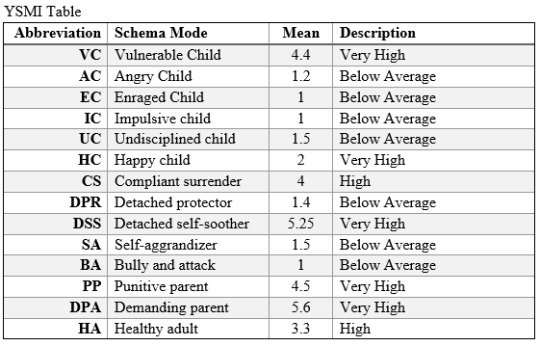
That's all, folks!
55 notes
·
View notes